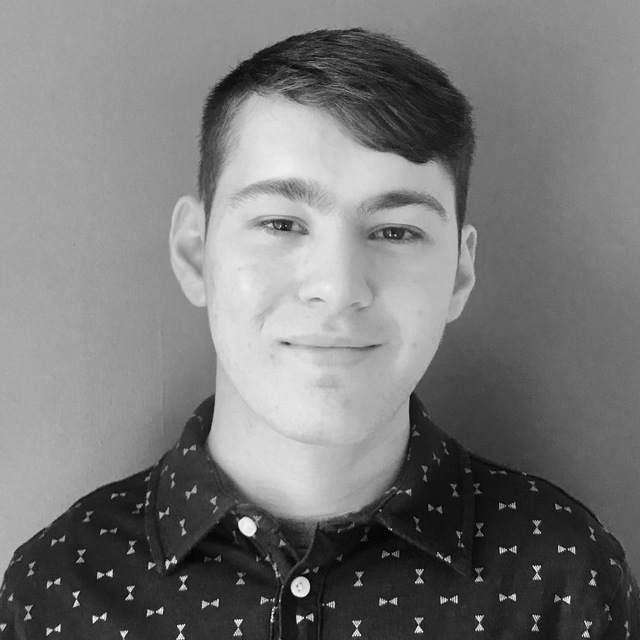
Nicholas Harness
Kaspa Ambassador
College DAO/KASPA-U
The Inaugural ETH Chicago held September 15-17 brought together a diverse group of blockchain enthusiasts, developers, innovators, and of course students. Among the many insightful presentations, Ambassador and Kapsa-U’s Nicholas Harness gave a presentation on Kaspa and CollegeDAO’s plans to integrate it into the student web3 community while also offering an exploration of student involvement in and contributions to this space.
This report delves into the key highlights of Nicholas Harness’ presentation and its implications for the future of blockchain education, the MIT Bitcoin experiment, CollegeDAO’s planned successor experiment, and Kaspa’s role in the ever-evolving student landscape.
They saw around 100 people in attendance for the Kaspa talk – mostly students and hackers.
They reported about 80 students from CollegeDAO, but sadly, could only get 17 rounded up for a picture.
Student Involvement in Web3
Nicholas Harness began his presentation by emphasizing the growing importance of Web3 technologies and the crucial role students can play in their development. He discussed how the blockchain industry offers unique opportunities for students to actively engage, contribute, and of course, learn. He highlighted the following key points:
1. Learning Opportunities – Harness stressed that blockchain and Web3 technologies are still relatively young, making it an ideal space for students to explore and innovate. They can gain practical experience and often even apply their knowledge in real-world projects inside and outside of their clubs on campus, thereby accelerating their learning curve. Tapping into the Kaspa development ecosystem accelerates their ability to learn about the latest in BlockDAG technology.
![]() 2. Collaboration – Web3 is inherently decentralized and community-driven, making it conducive for students to collaborate on open-source projects. Harness showcased several student-led initiatives and collaborations within the wider ecosystem, demonstrating how students are actively contributing to the growth of the blockchain space. Also covered was the fact that Kaspa, itself an open-source project, was designed and developed primarily by a team of academics, with Yonatan himself being a researcher at HUJI.
2. Collaboration – Web3 is inherently decentralized and community-driven, making it conducive for students to collaborate on open-source projects. Harness showcased several student-led initiatives and collaborations within the wider ecosystem, demonstrating how students are actively contributing to the growth of the blockchain space. Also covered was the fact that Kaspa, itself an open-source project, was designed and developed primarily by a team of academics, with Yonatan himself being a researcher at HUJI.
3. Skill Development – Students involved in blockchain projects can develop a wide range of skills, most importantly including on-chain-specific programming, cryptography, and smart contract development. These skills are highly sought after in the rapidly evolving tech industry as many companies not native to web3 are seeking to expand into this emerging industry. Through the KASPA-U initiative, we hope to get more students to work on cutting-edge code and contribute the the future of FInTech and blockchain evolution.
The MIT Bitcoin Experiment and CollegeDAO’s Successor Experiment
Nicholas Harness then transitioned to the MIT Bitcoin experiment, which was initiated to distribute Bitcoin to MIT students in 2014. He highlighted how this experiment was instrumental in introducing students to cryptocurrencies and blockchain technology. However, he also pointed out the limitations and challenges faced by this project.
1. Limitations of the MIT Bitcoin Experiment – Harness discussed how the experiment primarily focused on Bitcoin and lacked a broader educational component. Additionally, the distribution of Bitcoin raised regulatory concerns and required significant administrative overhead.
2. CollegeDAO’s Planned Successor Experiment – In response to the shortcomings of the MIT Bitcoin experiment (most importantly its inability to demonstrate full-scale adoption and even limited adoption on a true community-wide scale), Harness introduced CollegeDAO’s planned successor experiment. He explained that CollegeDAO aims to create a decentralized and transparent mechanism for distributing cryptocurrencies to students across different universities. This new approach is designed to not only address the limitations of the previous experiment but also demonstrate the practical abilities of Kaspa and how it is the perfect candidate for mass adoption by businesses globally of all sizes, and by extension could finally be the crypto to realize Satoshi’s vision.
Conclusion
Nicholas Harness’ presentation at ETH Chicago served as a rallying call for increased student involvement in Web3 and the blockchain industry. It underscored the potential for students to make meaningful contributions, both in terms of innovation and general education. Additionally, the discussion of the MIT Bitcoin experiment and CollegeDAO’s successor highlighted the evolution of blockchain acceptance in the realm of education. Kaspa’s role in supporting and fostering student engagement within this dynamic landscape was a testament to its commitment to the future of blockchain technology as a universal solution. As the blockchain industry continues to evolve, the active involvement of students and educational institutions will undoubtedly play a pivotal role in shaping its trajectory and help long term with lending legitimacy to Kaspa and web3 in the eyes of traditional businesses outside of the tech sphere. This presentation at ETH Chicago was a powerful reminder of the opportunities that await those who seek to explore and contribute to the world of Web3!
PS – Thanks to Rhubarbarian, for the Kaspa Slide Deck! It was used as the base for the presentation
Please consider supporting the Community Marketing Fund (CMF) to see more of this activity around the globe!
Donations to the Community Marketing Fund address:
kaspa:qphn7jh03zwjn4rveup09ev945v2glh3uulwlmcnzt3azrtd8vxhkuzhpz925
Reports can be found on KaspaTalks
If you feel this role is something you would like to step into in your region, consider applying here.
Please read and understand the criteria well, as a considerable level of energy and personality is required to be the face, hands and feet of Kaspa! This is a volunteer role at the moment, but as your local community grows we hope to see some donations come in specifically for the Ambassadors. As it is now, the CMF covers most hard costs for venues, merchandise, mentorship and creative from Rhubarbarian and his team.
